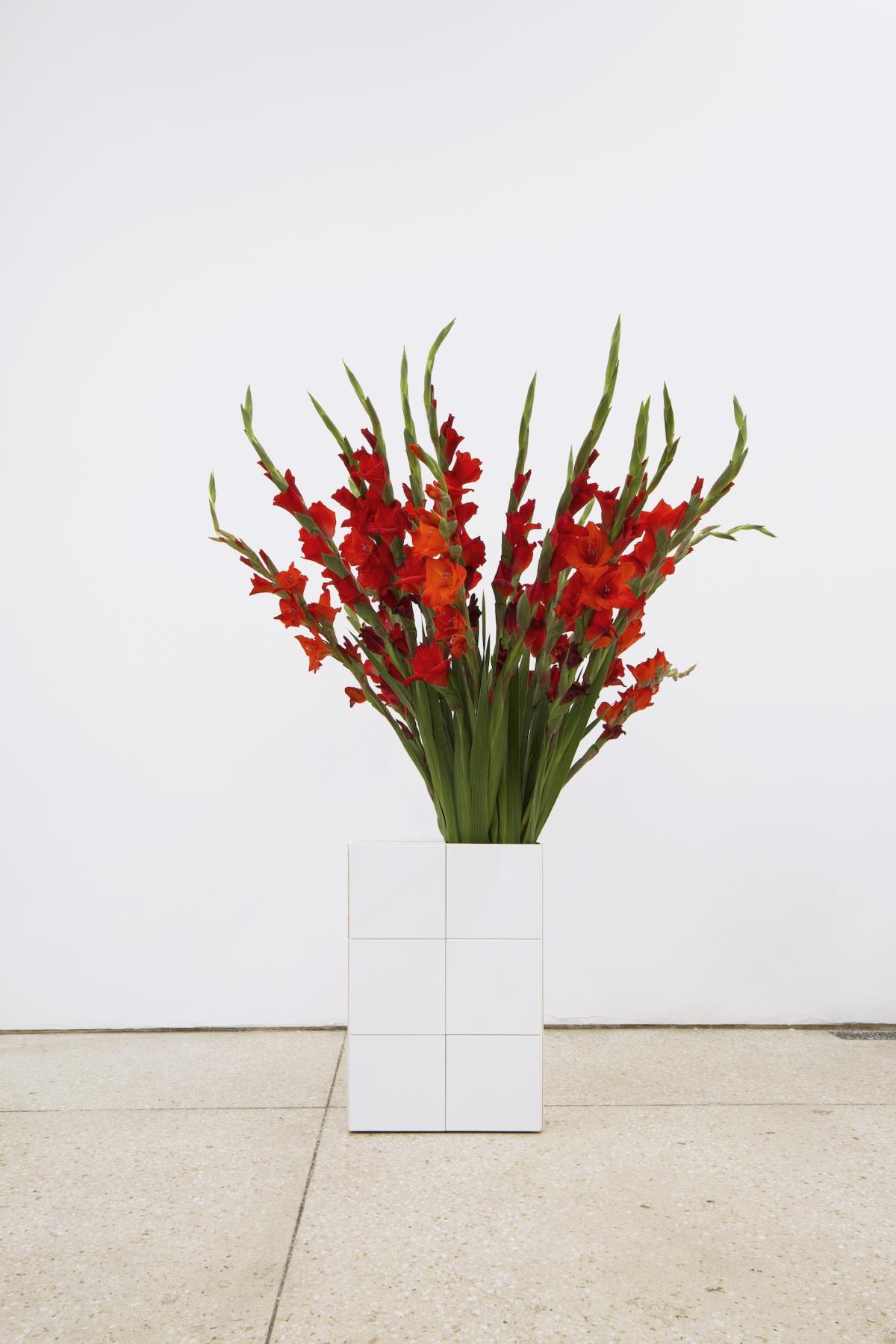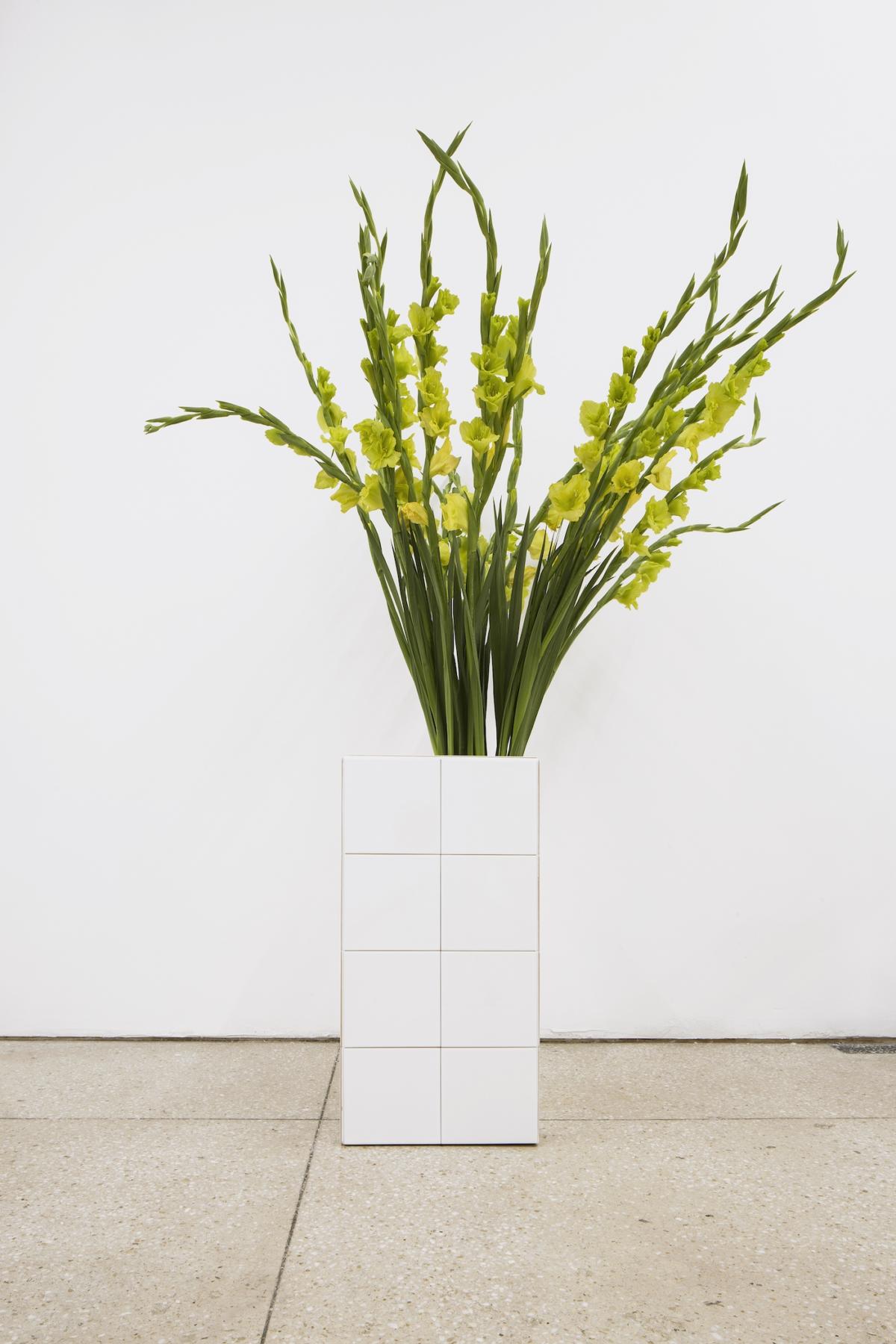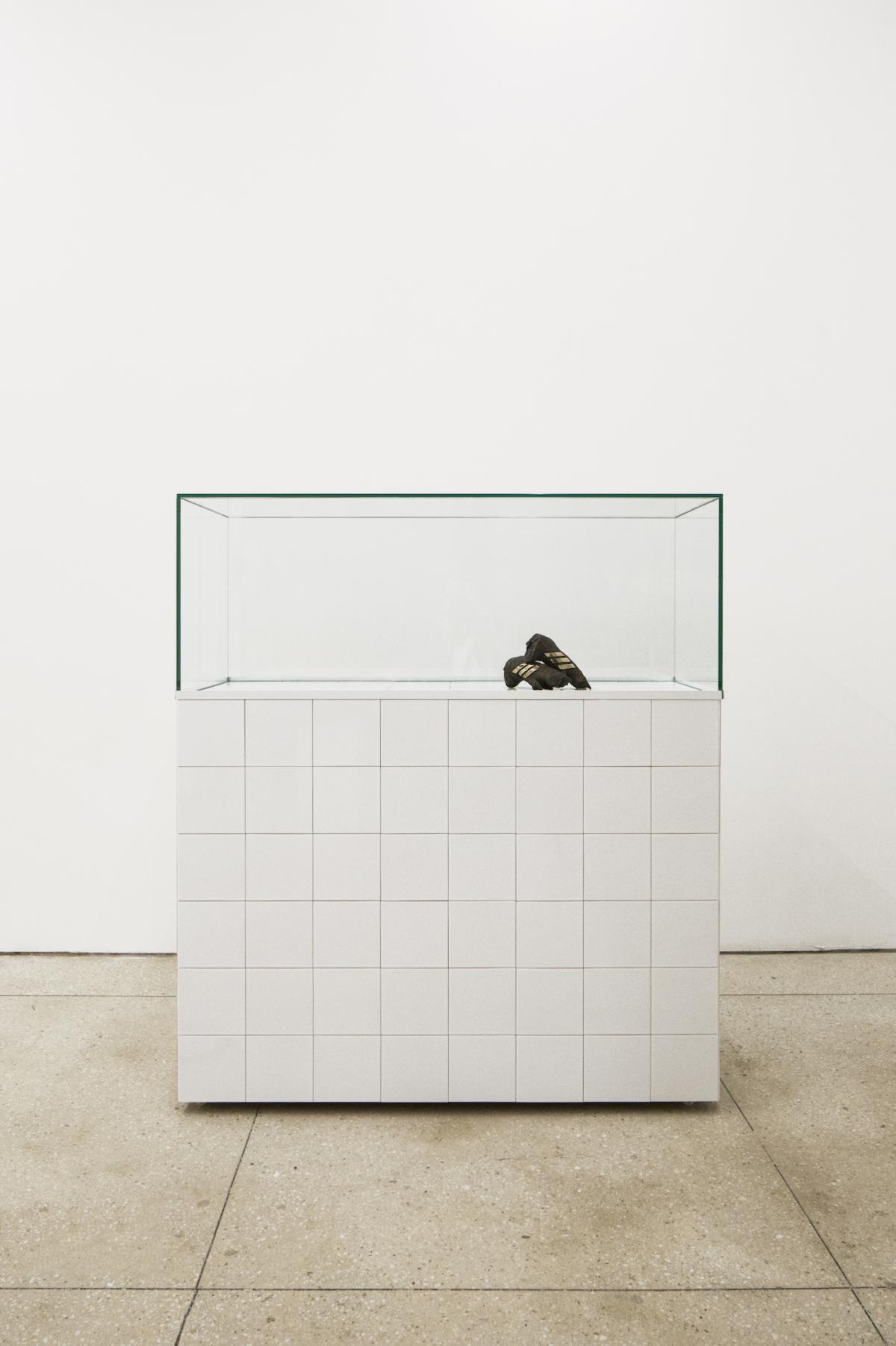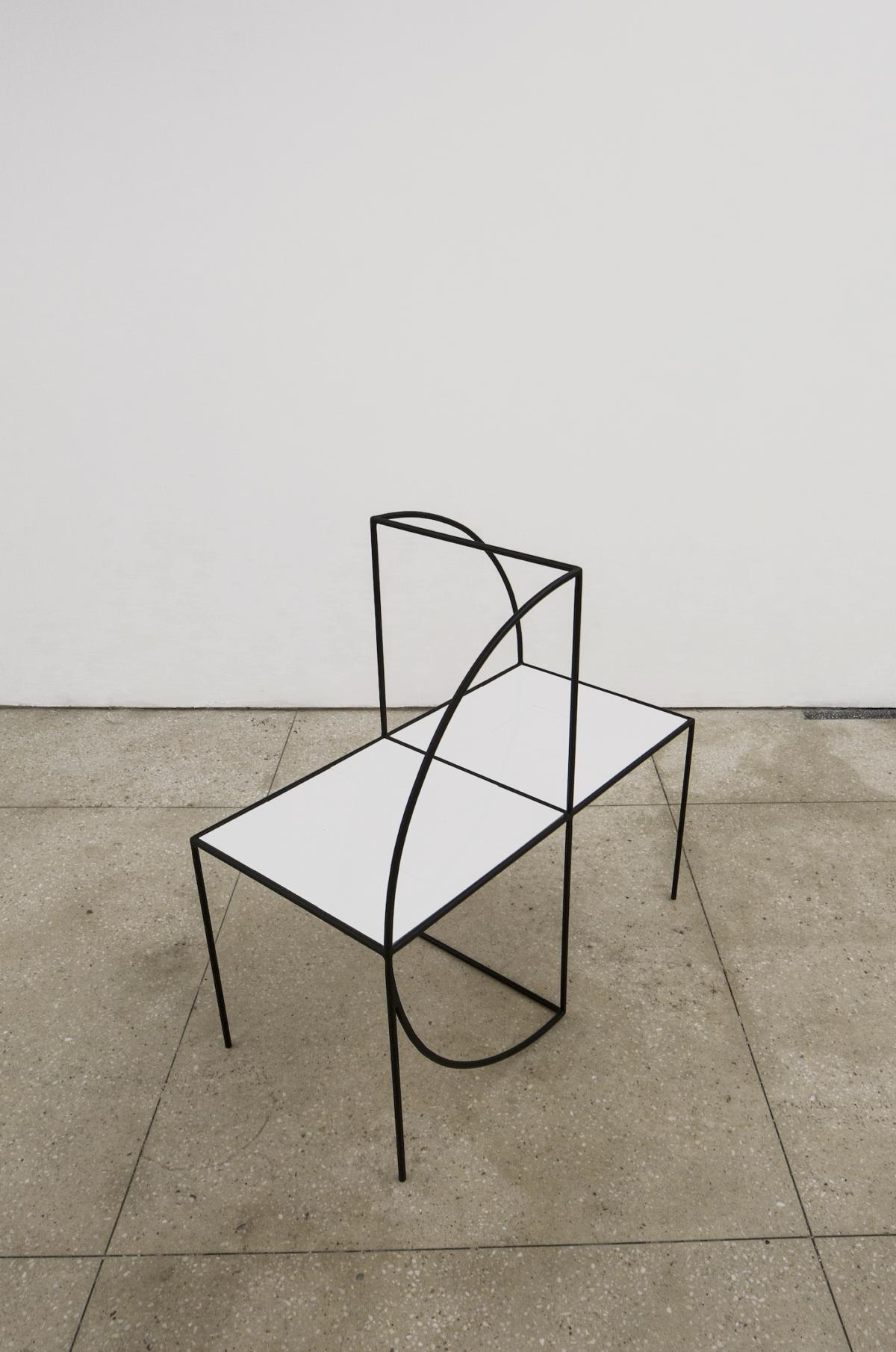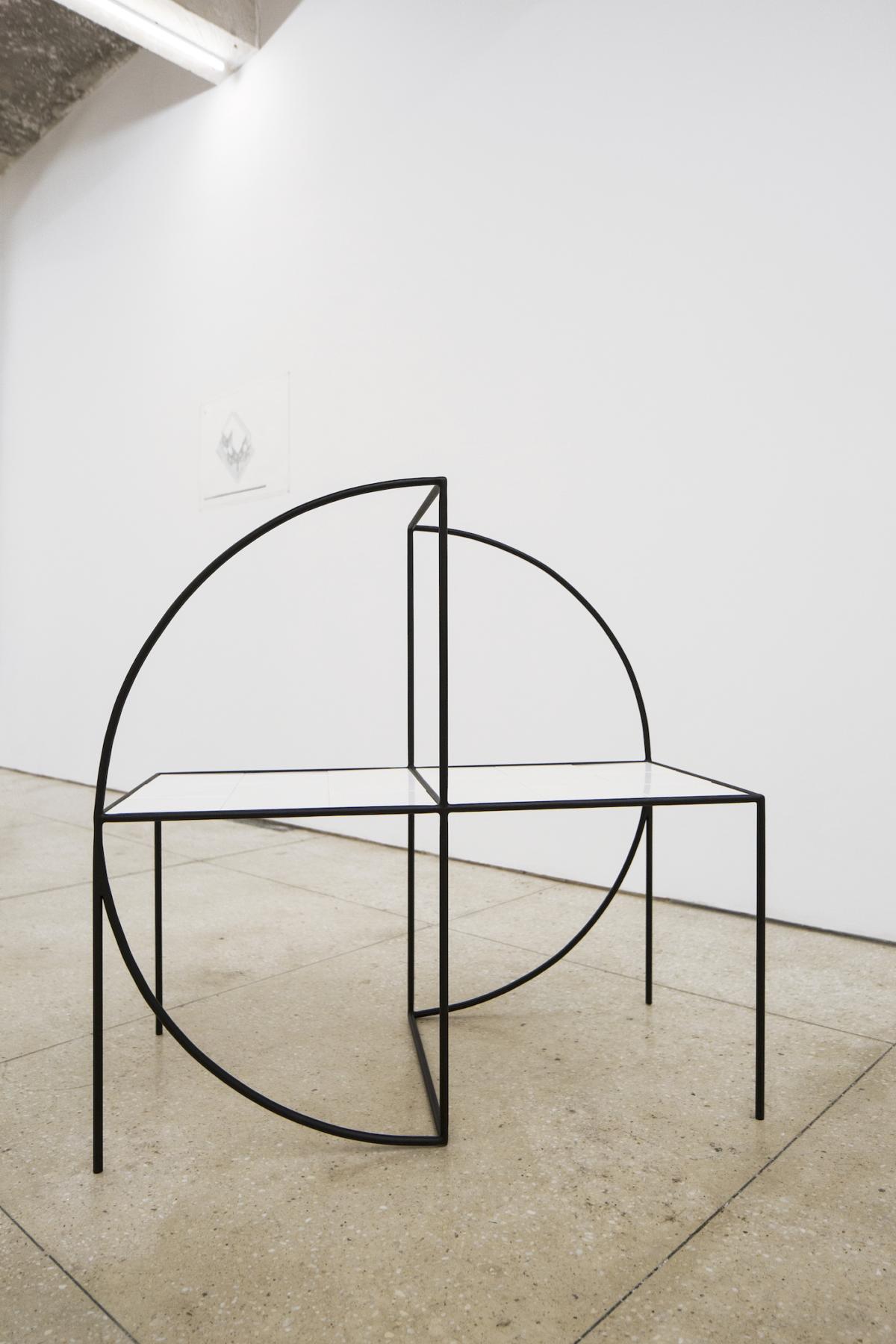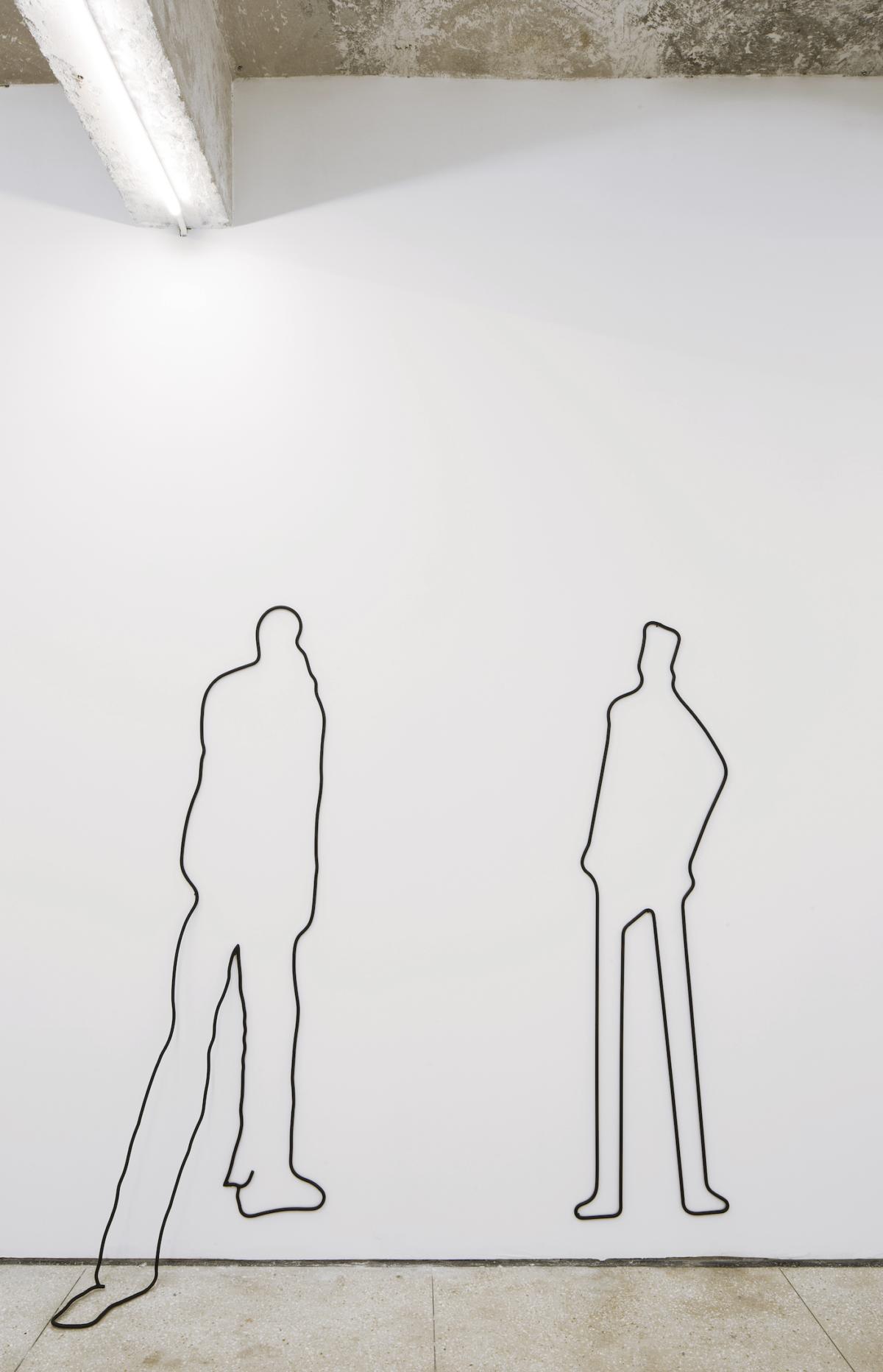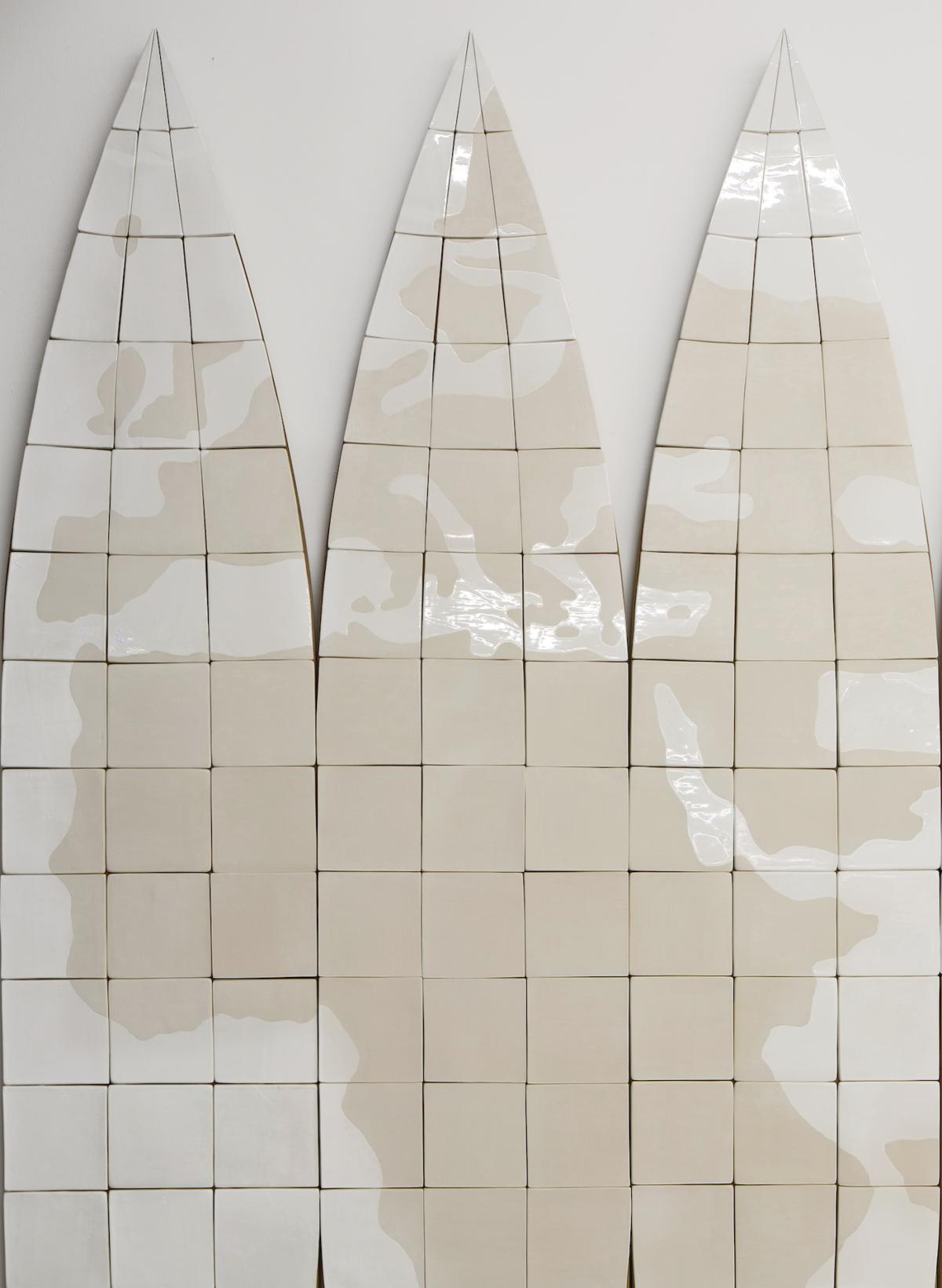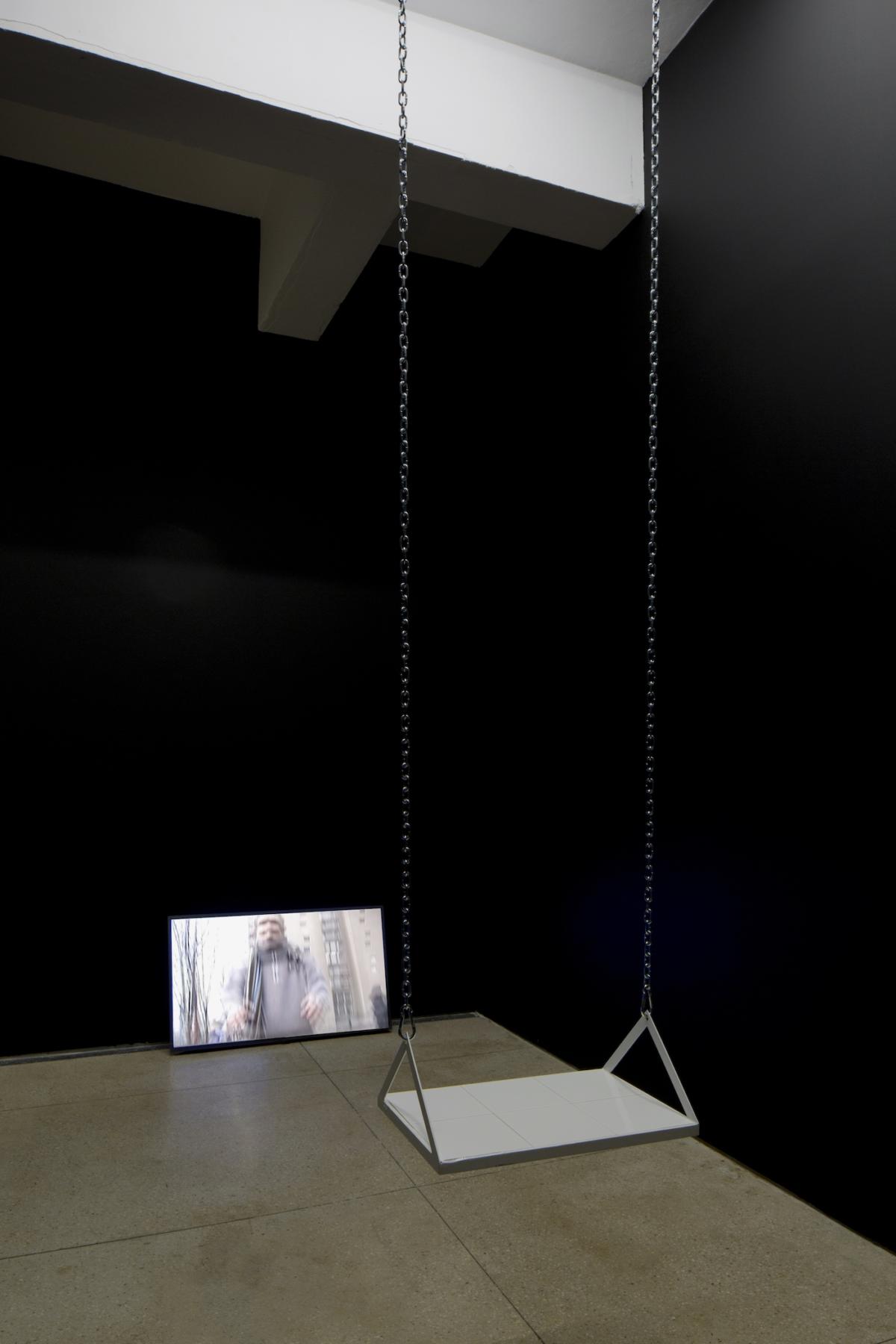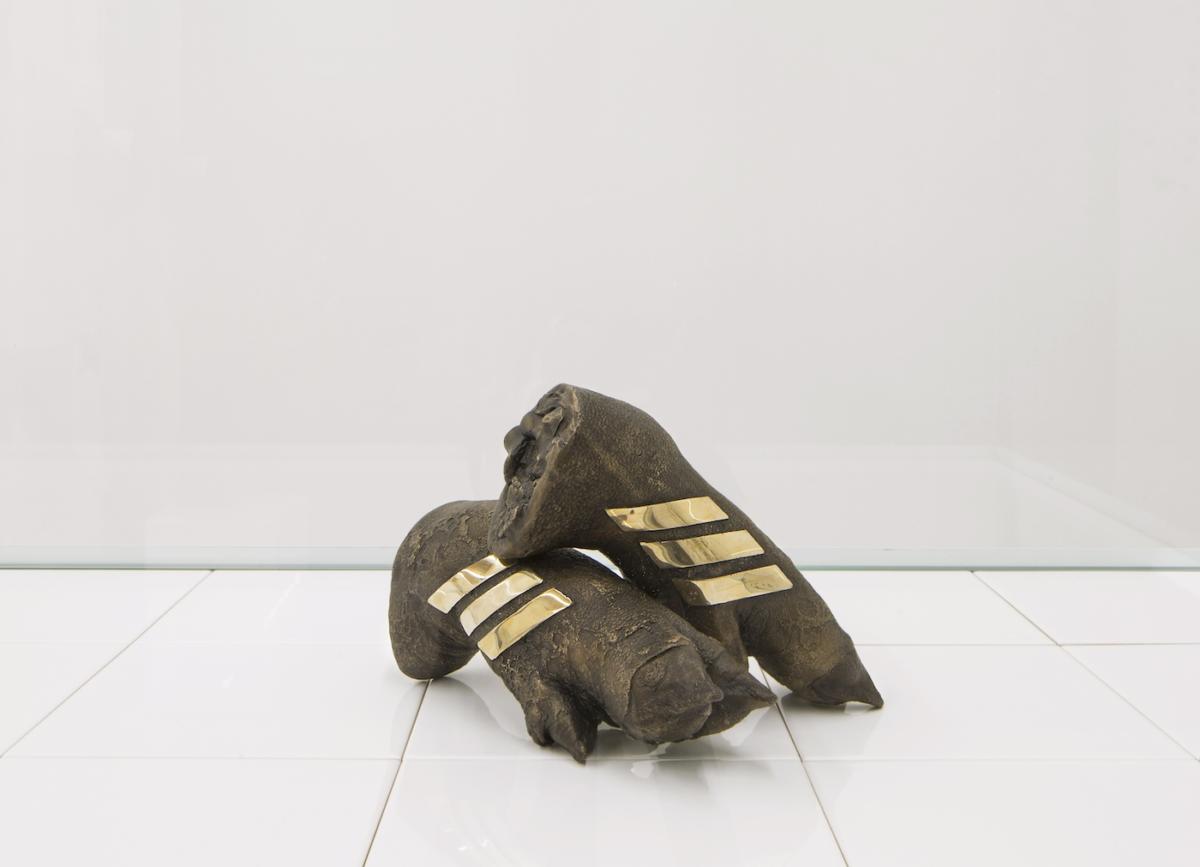Artist: Vlad Nancă
Title: Vis-à-vis
Venue: Suprainfinit Gallery, Bucharest
Curator: Jonatan Habib Engqvist
Photo: Sebastian Apostol
18 September – 9 November 2019
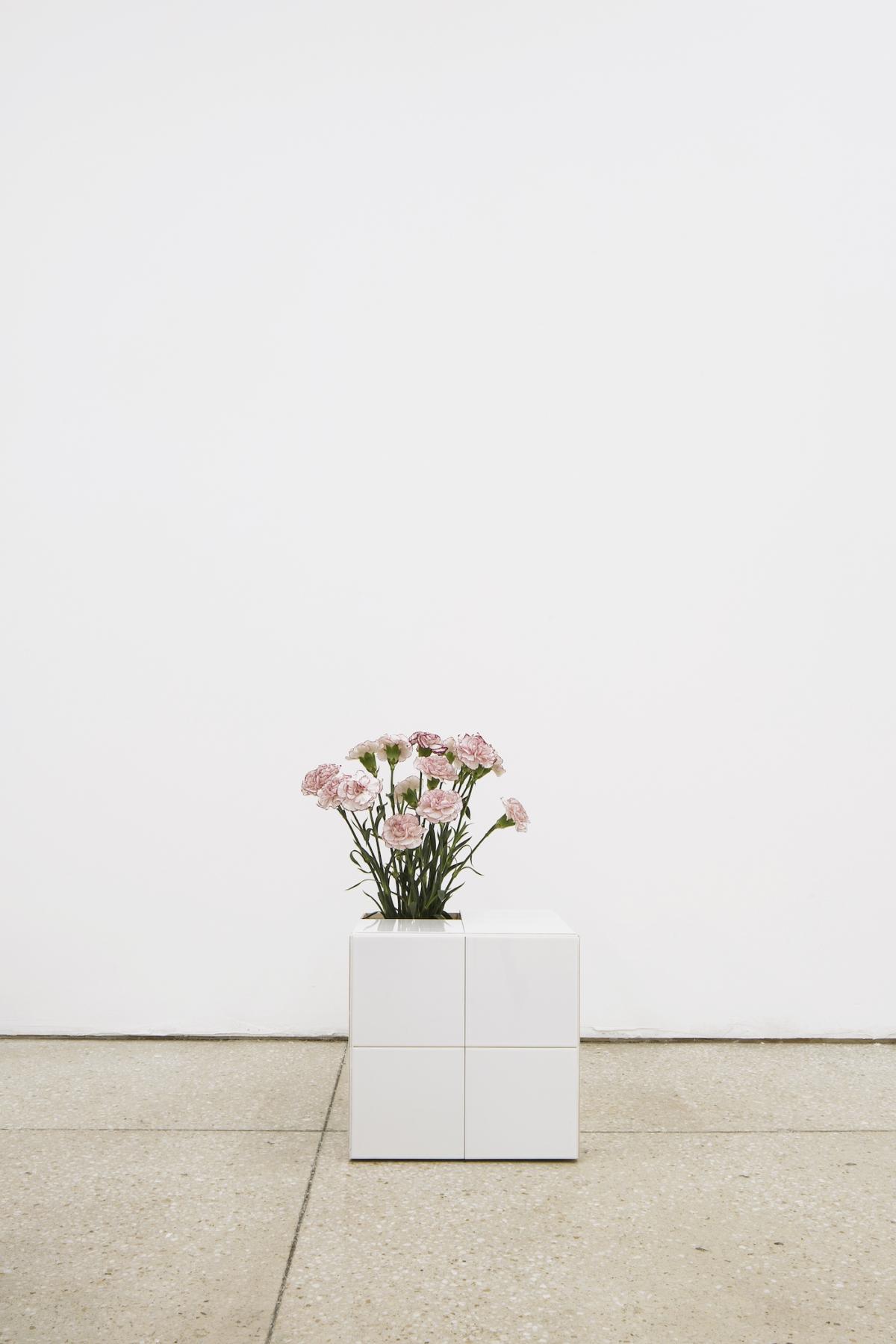
With works spanning the past two decades, Vlad Nancă´s reoccurring use of grids, ceramic tiles, houseplants, mirrors and slightly distorted vernacular objects from Socialist Romania will set numerous layers of history and materiality in motion. In this juncture between abstract and concrete, between reflection and landscape, memory and construct, the exhibition is at once referencing utopian architects like Italian Superstudio and their continuous grid, ideas of flat earth maps, as well as predefined notions of the former East and the former West.
A reoccurring organisational principle in Nancă’s practice is the grid. It is a system, which in itself may signify the way things are organised – as it is a construction of, and by, architectural determinism, imposed through governance and planning. And ever since early Modernity the grid has epitomized the way we treat the landscape. Above all it becomes clear in Nancă’s work that the grid is a form of conceptual speculation: indifferent to topography, to what actually can be seen, it claims the supremacy of abstract constructions over reality. So what happens when the grid itself becomes the topos?
Somehow the term “vis-à-vis” signifies an era, a moment, a series of events where the grid was well defined and cultural identity could be justified ”in comparison with” or ”in relation to” a defined other. There is definitely a lot of sampling and juxtaposing going on in the exhibition – from architectural references to social signifiers. But there are very few instructions. In the 2001 video installation “Swing me” we are forced to constantly readjust our optics and handle a sensation of warped gravity. In a large ceramic map that has been produced for this exhibition there is no text, no nomenclature. It is merely the glazing of the handmade tiles that suggests any difference between bodies of land and the sea. Martin Waldseemüller’s 1507 map, which is the point of departure for Nancă, was in fact the first map to name ”America” in honour of Amerigo Vespucci (the first European to concretely prove that the ”New World” was not Asia’s eastern outskirts as Columbus first thought). Nancă’s work brings to mind a famous and doubtlessly problematic line from Oscar Wilde’s pamphlet Man under Socialism: “A map of the world that does not include Utopia is not worth even glancing at, for it leaves out the one country at which Humanity is always landing. And when Humanity lands there, it looks out, and, seeing a better country, sets sail.”
written by Jonatan Habib Engqvist
